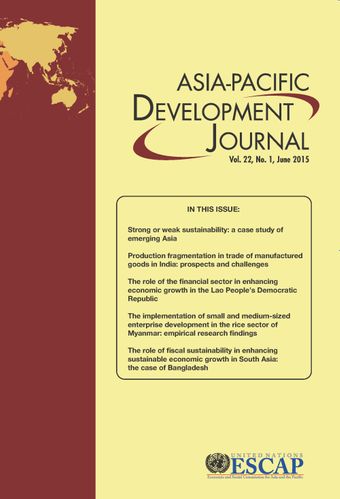-
Strong or weak sustainability: A case study of emerging Asia
- Source: Asia-Pacific Development Journal, Volume 22, Issue 1, Apr 2016, p. 1 - 31
-
- 27 Apr 2016
- Previous Article
- Table of Contents
- Next Article
Abstract
Sustainability can be weak or strong, depending on the nature of capital accumulation. Weak sustainability is characterized by a non-declining combined stock of capital and assumes that man-made capital can be replaced with natural capital. Strong sustainability, on the other hand, implies that natural capital cannot be replaced by any other capital. Based on this understanding, the present study analysed the growth patterns of 10 emerging Asian economies using time-series data over a 20-year period. For this purpose, the study used genuine savings as an indicator of weak sustainability and ecological footprint as an indicator of strong sustainability. The study found that the selected Asain economies, particularly the middle-income countries, are following a path of weak sustainability. While the high-income countries are gradually making an attempt, through various policy interventions, to move from a path of weak to strong sustainability, despite genuine savings having stabilized their ecological footprint per capita continues to show an increasing trend.
© United Nations





